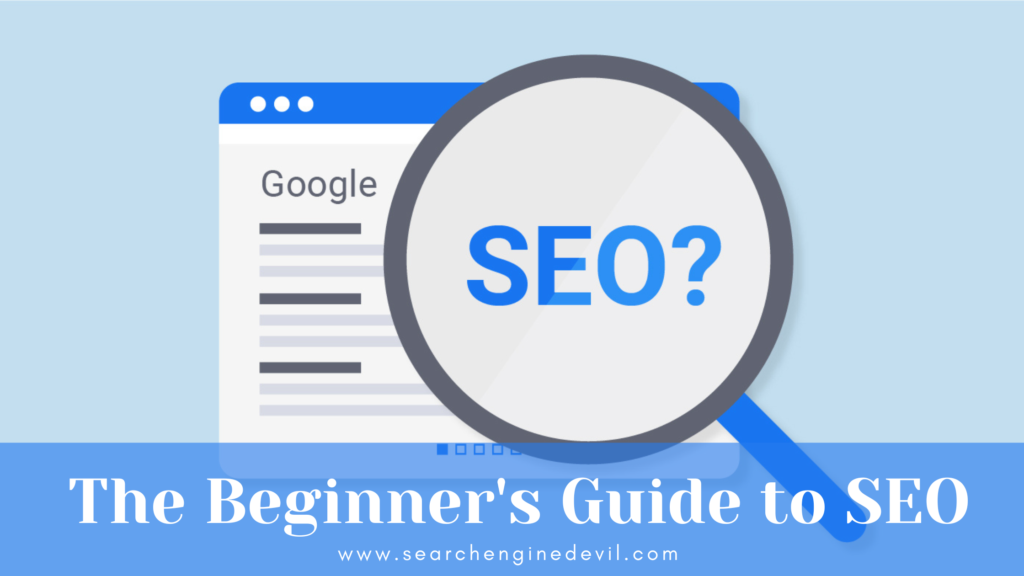In today’s digital landscape, visibility is everything. And for websites, the key to unlocking that visibility lies in the enigmatic realm of SEO – Search Engine Optimization. But fear not, intrepid explorer! This comprehensive guide will equip you with the knowledge and tools to navigate the SEO jungle and emerge a ranking champion.
What is SEO?
Imagine a vast library filled with countless books (websites) vying for attention. Search engines like Google are the librarians, tasked with helping users find the most relevant books (websites) for their queries. SEO is the art of optimizing your website so it stands out on those library shelves, attracting more visitors (readers) and ultimately achieving your goals.
Why is SEO Important?
Think about it: when someone has a question or needs information, where do they turn? Google, Bing, and other search engines are the modern-day oracles, consulted by billions daily. If your website ranks high for relevant keywords, it becomes readily accessible to this vast audience – a goldmine for organic traffic and potential customers.
The SEO Journey: A Step-by-Step Guide
Now, let’s embark on the SEO journey, dissecting it into manageable steps:
Step 1: Know Thy Audience & Keywords
- Who are you targeting? Define your ideal customer/reader to understand their needs, interests, and search patterns.
- What are they searching for? Conduct keyword research to identify relevant keywords with sufficient search volume and competition. Tools like Google Keyword Planner and SEMrush can be your allies.
- Focus on long-tail keywords: These are more specific and easier to rank for, attracting targeted traffic. Think “best vegan restaurants in Seattle” instead of just “restaurants.”
Step 2: Craft Content That Captivates
Remember, you’re not just writing for search engines, but for real people. Here’s the recipe for success:
- High-quality, informative content: Address your audience’s needs and provide value. Research, offer unique insights, and keep it engaging.
- Keyword optimization: Strategically sprinkle relevant keywords throughout your content, but avoid keyword stuffing.
- Structure for readability: Use headings, subheadings, and bullet points to make your content scannable and user-friendly.
- Optimize images: Include descriptive alt tags with relevant keywords.
- Internal linking: Link relevant pages within your website to improve user experience and distribute “link juice” (search engine authority).
Step 3: Technical Tweaks for Peak Performance
While you’re crafting captivating content, ensure your website is technically sound:
- Mobile-friendliness: In this mobile-first world, your website must adapt seamlessly to all devices. Google prioritizes mobile-friendly sites in search results.
- Website speed: Nobody likes waiting! Optimize page loading times for a smooth user experience. Tools like Google PageSpeed Insights can help.
- Structured data markup: Implement schema markup to provide search engines with richer information about your content, potentially enhancing search result snippets.
- Robots.txt and sitemap: Ensure search engine crawlers know how to navigate your website efficiently by submitting your sitemap and managing robots.txt access.
Step 4: Build Backlinks, Build Authority
Backlinks are like votes of confidence from other websites, telling search engines yours is trustworthy and valuable. Here’s how to earn them:
- Guest blogging: Contribute informative articles to relevant websites with engaged audiences.
- Broken link building: Find broken links on relevant sites and offer your content as a replacement.
- Directory listings: Submit your website to relevant online directories.
- Engage on social media: Build relationships with influencers and communities in your niche.
Step 5: Track, Analyze, and Adapt
SEO is an ongoing journey, not a one-time destination. Use analytics tools to track your website’s performance, identify areas for improvement, and adapt your strategy accordingly. Popular tools include Google Search Console, Google Analytics, and SEMrush.
Bonus Tips:
- Stay informed: SEO algorithms evolve, so keep yourself updated with industry trends and best practices. Follow SEO experts and publications.
- Patience is key: SEO takes time and consistent effort. Don’t expect overnight success, but celebrate your progress along the way.
- Focus on user experience: Ultimately, SEO is about providing value to your audience. Prioritize user experience, and the ranking rewards will follow.
Remember, the SEO path is paved with continuous learning and adaptation. With this comprehensive guide and a dash of dedication, you’ll be well on your way to conquering the search engine maze and achieving your online goals!
Additional Resources:
- Google Search Central: [https://developers.google.com/search/]



